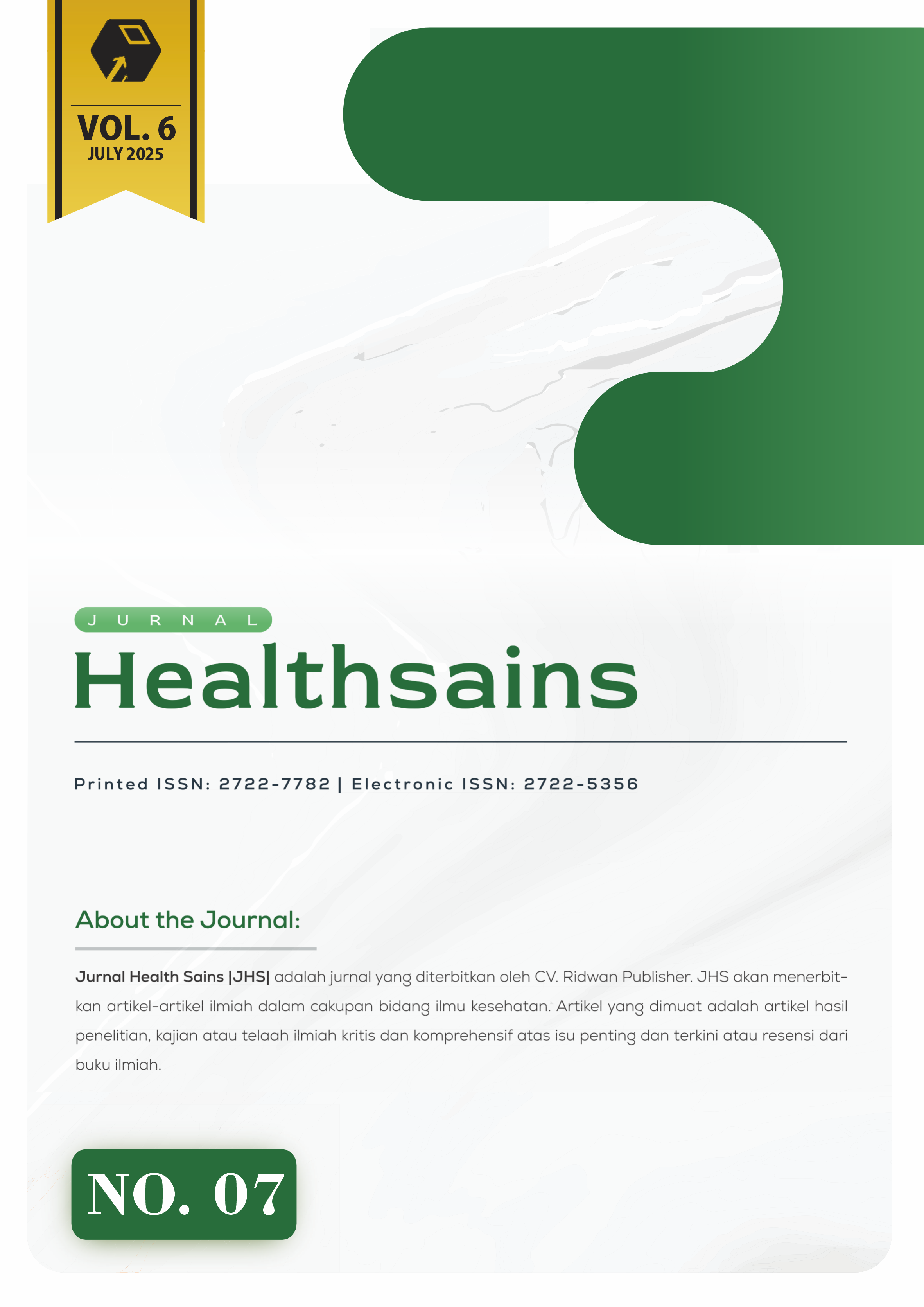The Influence Of Self-Efficacy And Self-Control On Dietary Behavior Of Adolescents At Risk Of Non-Communicable Diseases
DOI:
https://doi.org/10.46799/jhs.v6i7.2658Keywords:
heart disease, early detection, attitude and lifestyleAbstract
During the Covid-19 pandemic, people with heart disease are patients who are at high risk of severe severity if exposed (Indonesian Association of Cardiovascular Specialists, 2020). Chairman of the Central Board of the Indonesian Association of Cardiovascular Specialists (PERKI), Isman Firdaus, said that the Covid-19 pandemic which has been going on since the end of 2019 has become a concern for heart disease sufferers. Considering that exposure to any infection, including Covid-19 infection, can worsen cardiovascular diseases such as the recurrence of coronary heart disease or chronic heart failure (RI, 2019). One of the important efforts in preventing the occurrence of cardiovascular disease that can be done is to identify the risk factors for cardiovascular disease from each individual. There are several models to detect risk, one of which is by using the Jakarta cardiovascular score [2]. Health promotion is also one of the efforts in managing modifiable risk factors for heart disease (Handayani, 2010). Health promotion is expected to prevent risky behaviors that lead to an increased incidence of heart disease in the long term. This study aims to see the effectiveness of early detection and health promotion on changes in attitudes and lifestyles of residents at risk of heart disease after the covid-19 pandemic. The research method in this study uses a quasi-experimental design with a total of 30 respondents in a group of 1. The research was conducted in the working area of the Puskesmas of Pasar Minngu District, Jakarta. The results showed that after intervention by conducting early detection and providing health promotion, there was a change in attitude of 0.8 points, from 88.13 (before the intervention) to 88.95 (after the intervention). The results of the T test were obtained p value = 0.004, meaning that statistically there was a significant difference between before and after the intervention. The respondents' lifestyle also changed by 5.5 points, from 66.03 (before the intervention) to 71.62 (after the intervention) with p value = 0.004 which means that statistically there is a significant difference between before the intervention and after the intervention was carried out.
Downloads
Published
Issue
Section
License
Copyright (c) 2025 Bara Miradwiyana, Sri Sunarjono, Purwanti Sri Pudyastuti

This work is licensed under a Creative Commons Attribution-ShareAlike 4.0 International License.
Authors who publish with this journal agree to the following terms:
- Authors retain copyright and grant the journal right of first publication with the work simultaneously licensed under aCreative Commons Attribution-ShareAlike 4.0 International (CC-BY-SA). that allows others to share the work with an acknowledgement of the work's authorship and initial publication in this journal.
- Authors are able to enter into separate, additional contractual arrangements for the non-exclusive distribution of the journal's published version of the work (e.g., post it to an institutional repository or publish it in a book), with an acknowledgement of its initial publication in this journal.
- Authors are permitted and encouraged to post their work online (e.g., in institutional repositories or on their website) prior to and during the submission process, as it can lead to productive exchanges, as well as earlier and greater citation of published work.






